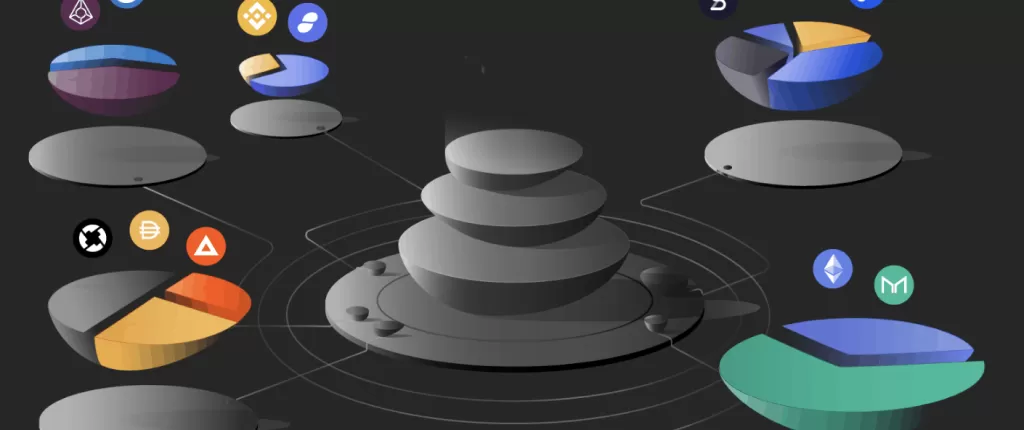Why is liquidity important?
Liquidity is an indicator which allows you to assess how much the purchase or sale of an asset affects its price. Low liquidity is usually accompanied by increased price volatility. With high liquidity, price fluctuations are smaller.
The most liquid asset today is cash. If a $10 million transaction is made, the market absorbs it easily, and there is no fluctuation in the value of the dollar. The cost of such an operation and the price of the currency at the time of its completion are known in advance.
But if the same operation is performed with bitcoin or any other digital coin, its impact on the value of the cryptocurrency will be much more significant.
What is liquidity mining?
Liquidity mining is a very important strategy. Liquidity mining is a community-based approach to the decentralized market maker and protocol governance.
The term liquidity mining comes because it is the injection of a liquidity mining program. This injection of liquidity by investors allows them to mine governance tokens that are delivered to those who participate in the system. It is, let’s say, the liquidity mining model of that platform, and it is again closely related to the concept of staking.
A token issuer or exchange can reward a pool of miners for providing liquidity for a specified token. For example, on the Compound protocol, users who deposit tokens will earn both interest and a share of the Compound governance token, COMP.
As DeFi protocols need to build liquidity, they reward users who deposit crypto assets on the platform. Profit farming involves maximizing the rewards for providing liquidity on DeFi platforms.

Liquidity mining involves receiving crypto assets as a bonus on top of the regular rewards. These are usually native platform tokens or protocol control tokens. Control tokens can be used to vote for protocol changes or sold on an exchange.
Liquidity mining is a strategy by which DeFi protocols. They seek to capture the attention of users so that they can inject funds into said protocols. This with the intention of receiving liquidity mining rewards in the form of tokens that can be traded on or off the platform, or simply do hold of them, and receive better earnings with the increase in the protocol-controlled value of said tokens received. Without a doubt, a very interesting way to attract investment and that, at the same time, has completely transformed the DeFi world within Ethereum.
On the other hand, liquidity mining is closely related to yield farming. Yield farming is a strategy that seeks to generate profits by making investments in various platforms taking advantage of different market variables.
However, we usually talk about liquidity mining when a DeFi protocol activates a functionality that allows its users to receive rewards for the fact of depositing and blocking capital on their platform. The rewards are generally received in the form of governance tokens.
These tokens may or may not give voting power within the protocol. In addition, they regularly offer access to interest or rewards that are paid regularly to their holders. In this way, the more money they block on the platform, the more tokens they receive and the more rewards they obtain, thereby making higher profits.
Liquidity mining is a characteristic and strategy of some decentralized finance protocols (DeFi) with which they seek to attract users. This focuses on encouraging the injection of liquidity into the protocol in exchange for distributing among users a series of tokens that give access to the governance of the project and that can also be exchanged for better liquidity mining rewards or for other rewards.
Having governance access to a token is important to someone who believes in a project and wants to be a part of the growth of the token’s ecosystem. This is common for tokens built on a blockchain that boasts many projects.
Risks of liquidity mining
Liquidity mining shares the same basic risks as yield farming. Again, the key difference here is in governance access. If tokens in the liquidity pool were lost in the liquidation process, the benefits of governance access that came with having that token would be lost.
What are liquidity provider tokens?
The liquidity provider tokens or lp tokens are a mandatory highlight of new DEXs based on the Automated Market Makers System. They ensure that AMMs are non-custodial. Therefore, you can notice that tokens work without allocating the control of your crypto assets to the DEX.

You can understand how lp tokens work by taking note of the fact that you are in control. Liquidity providers get the tokens in return for providing assets in the LPs and staying in control of their tokens. It is also important to note that an autonomous code supports the management of the liquidity pool.
The equal distribution of lp tokens according to the contribution of liquidity providers is a unique highlight of how lp tokens work. If you are contributing $100 USD worth of assets in a Uniswap pool which has a total value of $1000, then you would receive 10% of the lp tokens for the pool. The liquidity provider tokens represent your share of the assets in the liquidity pool. The lp tokens give you complete control over your assets and the freedom to withdraw them according to your preferences.
Protocol owned liquidity
In the future of DeFi, protocol-owned liquidity (POL) is a very important concept. POL is a popular provisioning tactic amongst some major revenue-generating initiatives in the market. It is indeed an interesting formula to diversify a protocol treasury and, if architected correctly, a sustainable market for the native asset. Low liquidity induces volatility.
Arguably, Ethereum (ETH) is the prevalent pair for all decentralized markets on its network. While this asset has its benefits, it also inherits price exposure, which either is a magnitude greater or less than that of any token.
Protocol-owned liquidity (POL) is one of a few key innovations of the DeFi 2.0 narrative. The protocol behind this invention is Olympus DAO. Protocol-owned liquidity seeks to solve the mercenary capital problem of DeFi 1.0.
What is Olympus DAO?
Olympus DAO is a project that aims to become a reserve currency for the DeFi market by using decentralized assets such as DAI and FRAX as underlying assets to ensure price stability. The project is currently working on creating OHM, a new stablecoin as a reserve currency, as the Ethereum ecosystem relies on USD-backed stablecoins, undermining the value of decentralization. The mercenary capital problem that plagues DeFi 1.0 protocols, especially AMMs, is caused by protocols seeking to incentivize users through liquidity providers tokens and trading fees.

The goal of the Olympus DAO is to create a currency system where the DAO has strong control over the behavior of the OHM token. The concept is similar to the gold standard. The OHM token provides a floating value on which its users depend, while at the same time, OHM draws its value from treasury reserves.
Therefore, OHM is a “secured” and not a “pegged” cryptocurrency. It is not pegged to the US dollar and is backed by a basket of assets. In addition, by focusing on supply rather than price, Olympus DAO believes that OHM will be able to maintain its protocol-controlled value even in the face of market volatility.
How does Olympus Dao work?
It works like this: the Olympus DAO Treasury backs each OHM with at least one DAI. When OHM trades below one DAI, the treasury will buy back and burn the OHM until the price returns to one DAI. However, there is no upper limit, so OHM can trade above one DAI.

Olympus has its own liquidity instead of renting it. To understand, let’s back up a moment and talk about decentralized finance in a wider context. Decentralized finance protocols such as Uniswap, Curve, and Sushi depend on users to provide liquidity to the protocol. That dependence is great for keeping markets efficient and liquidity distributed but poor for shielding the protocol’s long-term value from the whims of the market.
There’s also the problem of incentives. To keep liquidity providers onboard, protocols must bribe them with higher returns. Otherwise, they’ll abandon ship and head to another platform.
Olympus solves the problem of its own liquidity migration because it has its own liquidity. It does this by buying liquidity from its users in exchange for discounted OHM tokens in a process it calls bonding.
By owning the vast majority of its liquidity (Olympus currently holds 99.5%), Olympus keeps the protocol liquid and also protects the value of the reserve-backing OHM tokens.
This allows Olympus DAO to grow its treasury further by reaping the rewards from its liquidity provider tokens, which again raises the reserve’s floor value, as well as that of OHM.
Incentivizing users to add value to a protocol sounds like a meaningful addition to an ecosystem. But users can easily switch to the protocol offering the best incentives, creating a race to the bottom scenario for protocols as they increase the supply of their governance token and, in doing so, decrease its value.
Olympus DAO solves this issue primarily through protocol-owned liquidity, which makes use of two popular DeFi mechanisms: bonding and staking.
Bonding
Bonding is the protocol’s second value-accumulation strategy and is considered its greatest innovation for the decentralized financial space. Through bonds, the protocol acquires its own liquidity and reserve asset that it uses to become a decentralized digital currency.
Bonding is an active short-term strategy where users purchase OHM directly from the protocol in exchange for various assets such as stablecoins, ETH or liquidity tokens.
Olympus enables its users to purchase their OHM using ETH, DAI, and other assets at a discounted rate. To mitigate the risk of traders turning around and taking advantage of this arbitrage opportunity, Olympus vests these tokens to bonders over a period of time, typically between 5 and 10 days (the vesting period is two days at the time of writing).
Selling OHM as bonds has two benefits to the Olympus ecosystem: the treasury now has a basket of assets backing the ecosystem, and the protocol can now contribute to LPs (liquidity pools) and earn fees on OHM trading pairs.
The treasury holding these assets now gives Olympus DAO a “floor price” as the market value should not go below the value of the Olympus treasury. Currently, Olympus owns over 99% of its OHM-DAI pair and has collected millions of dollars in trading fees.
Bonding creates a risk that as holders start selling OHM and the price decreases, the treasury will have to buy OHM to stabilize the price. OHM buybacks by the treasury decrease the value held in the treasury and create a negative feedback loop of value decline. A solution to prevent this negative feedback loop is staking OHM tokens.

Staking
The Olympus team implemented a staking mechanism into the protocol to prevent sell pressure on the OHM token. Not only did they add staking, but they also made staking a lucrative incentive. At the time of writing, staking APY is over 800%. Olympus DAO employs a simple game-theoretic model to incentivize users to exhibit behavior beneficial to the community.
Staking is a passive investment strategy with a long-term horizon, as users are rewarded for maximizing the time they remain staked. Olympus’ high APY encourages stakers to focus on increasing their OHM amount rather than the dollar value of OHM, as a user’s increasing participation in OHM can outweigh their potential dollar value losses.
The matrix shows that any action that involves one user staking or bonding and the other doing the inverse results in a net positive outcome. Any action involving selling is at best a net neutral outcome, and both selling creates a net negative scenario for the ecosystem.
Conclusion
Olympus DAO’s addition of protocol-controlled liquidity to the DeFi ecosystem will carry into the future. Some wonder if discounting bonds will cause similar issues as incentives in DeFi 1.0 or if Olympus DAO has too big a lead over competitors. Regardless we will likely see a combination of protocol-owned liquidity and traditional LPs in DeFi protocols in the future.










